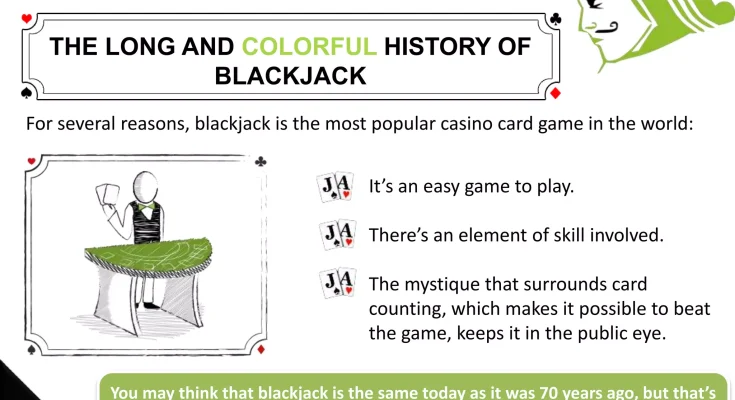Blackjack feels timeless, doesn’t it? The simple goal—get closer to 21 than the dealer—hasn’t changed for centuries. But the path to that goal? Oh, it’s been a winding road. The rules governing this casino staple have shifted dramatically, shaped by law, technology, and the eternal cat-and-mouse game between players and the house.
Let’s dive into the fascinating journey of how blackjack rules evolved from a vague pastime into the codified game we know today.
The Murky Origins: What Was Blackjack Before 21?
Believe it or not, the earliest ancestors of blackjack weren’t even called 21. Games like the French “Vingt-Un” (Twenty-One) and the Spanish “Una” were popular in European gambling houses in the 1700s. The rules were, well, a bit all over the place.
Back then, only the dealer was allowed to double down. Can you imagine? And betting happened after each card was dealt, not as a single initial wager. It was a slower, more chaotic affair. The ace, now the most powerful card in the deck, was often limited in its value. The game was a work in progress, slowly migrating across the Atlantic to the burgeoning United States.
The American Crucible: Shaping the Game in Casinos and Saloons
When blackjack hit American soil, it was still a relative unknown. To drum up interest, gambling halls started offering bonus payouts. The most famous? A 10-to-1 bonus if a player’s hand contained the ace of spades and a black jack (the jack of clubs or spades). This special hand was called, you guessed it, “blackjack.”
The bonus didn’t last, but the name stuck. And as the game settled into Nevada’s legal casinos in the 1930s, the rules began to solidify into a standard form. This was a crucial period for the historical evolution of blackjack rules.
The House Gets an Edge: The Dealer’s Rule Changes
Early on, dealers often played by the same rules as players. They could hit or stand on their own discretion. This was a nightmare for the house, of course. So, casinos introduced a single, devastatingly simple rule that forever tilted the odds in their favor: the dealer must stand on all 17s and must hit on 16 or lower.
This removed all decision-making from the dealer’s side. It also gave the house a predictable, mathematical edge. It was a game-changer, literally.
The Atomic Age of Blackjack: Card Counting and Countermeasures
The 1960s were a revolution. A band of brilliant mathematicians and students, led by Edward Thorp, published “Beat the Dealer.” Thorp used computer analysis to prove that card counting wasn’t just a myth; it was a viable strategy to beat the casino.
Panic ensued in the gambling world. Casinos had to adapt their rule sets to protect their profits. This led to some of the most significant rule changes in the modern era.
| Old Rule (Pre-1960s) | New Rule (Post-Counting Craze) | Impact on Players |
| Single-deck games were the norm. | Introduction of 4, 6, and 8-deck “shoes.” | Made card counting significantly more difficult. |
| Doubling down on any two cards. | Restrictions on doubling, often only allowed on 9, 10, or 11. | Reduced player advantage on strong hands. |
| Liberal splitting rules. | Limits on re-splitting Aces or pairs. | Limited a key strategic move for players. |
Honestly, this was the real start of the arms race. Casinos weren’t just providing a game anymore; they were actively defending against an intellectual threat.
The Digital Revolution: How Online and Live Dealer Changed Everything
If the 60s were about brains, the 21st century was about bandwidth. The rise of online casinos in the 1990s and 2000s created a new playground—and new rule variations. Software allowed for near-infinite tweaks.
You started seeing games with rules that would be unthinkable in Vegas:
- 6:5 Payouts on Blackjack: Instead of the traditional 3:2, this single change massively increases the house edge. It’s a classic example of a rule evolution that benefits the casino, often sneaked into single-deck games to lure the unwary.
- Dealer Hits on Soft 17: This gives the house another slight, but significant, mathematical nudge. It’s now the standard in many jurisdictions, both online and off.
- Surrender: This player-friendly rule, allowing you to fold your hand for half your bet, became more common online as a premium option, though it’s still rare on the physical floor.
And then came Live Dealer games. Here’s the deal: they merged the convenience of online play with the tangible trust of a human dealer. The rules had to be perfectly standardized and transparent, broadcast in high definition for all to see. This pushed for a new level of consistency, even as side bets and new variations proliferated around the core game.
So, Where Does That Leave Us Today?
Modern blackjack is a spectrum. You can find a game where the rules are incredibly favorable to the player, and another—often on the same casino floor—where the house edge is brutally high. The key for any player now is to be a historian, in a way. To understand that the rules are not fixed. They are a negotiation.
The evolution of the game teaches us one thing above all: blackjack is a conversation. A back-and-forth between player strategy and house protection that has been going on for 300 years. It’s a living game, its rules etched not in stone, but in shifting sands of probability and profit.
Next time you sit at a table, virtual or real, you’re not just playing a game. You’re participating in a long, storied history of subtle changes and bold innovations. And that’s a hand worth playing.




